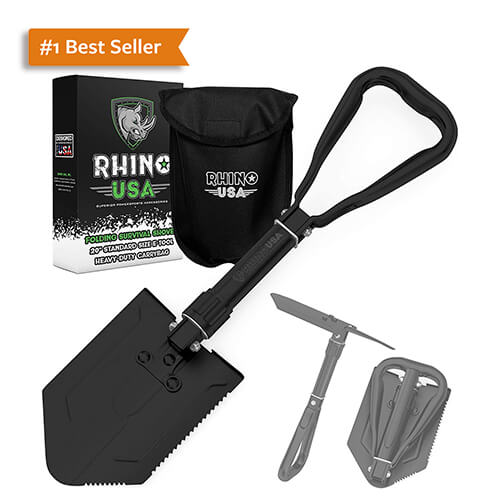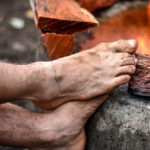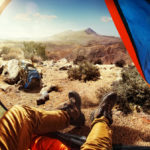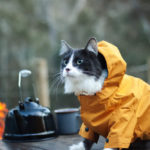Insulation works in two ways. You can either trap heat or cold, depending on the situation. When tent camping, most experts use insulation to stay warm. Most campers also rely solely on the heat their bodies produce to fight the cold.
The notion sounds ridiculous, but things make sense once you realize that the energy generated by your own body heat is akin to the energy that a 100 Watt light bulb produces.
How to Insulate a Tent; How insulation Works?
The aim of summer tent or winter tent insulation is to keep all that heat inside. Allowing it to accumulate until you’re warm and toasty. Doing so requires one to erect a barrier that will prevent any heat from escaping.
If you do a good job, not only will you prevent heat from escaping, but you will also raise the temperature.
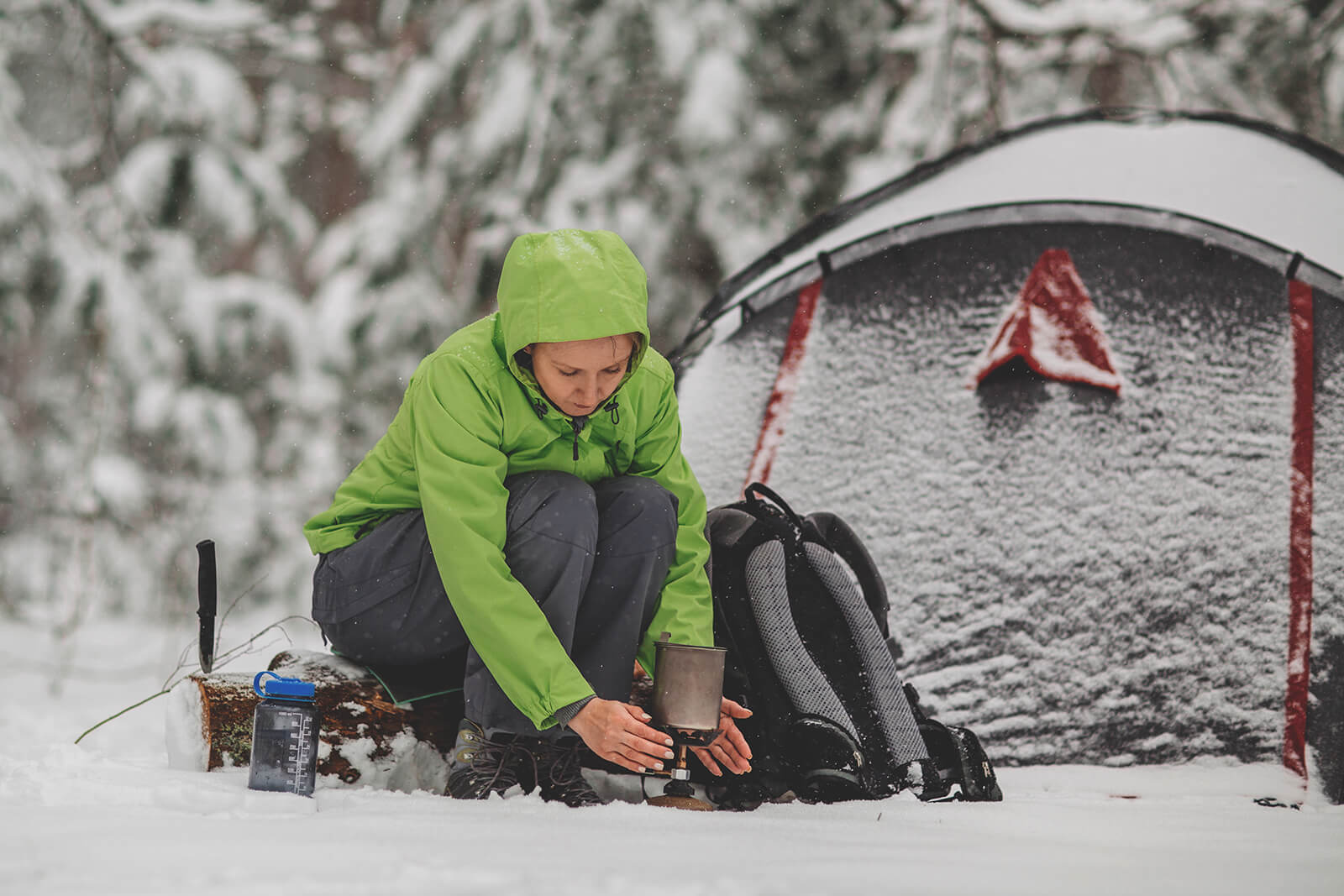
Why is it important to know how to insulate a tent for winter camping?
Insulation isn’t a luxury. Yes, a warmer tent will make for a more comfortable sleeping experience. No one wants to be cold. However, you should know that there is a risk associated with winter camping. The cold can kill you.
And if you survive, the injuries you sustain could haunt you for the rest of your life. Plenty of campers have been hospitalized for hypothermia and frostbite.
Now, admittedly, modern technology has simplified the process of staying warm.
And if things go wrong, most emergency service personnel are one call away. But every expert camper knows that you cannot predict accidents. Your phone can die and or your heating gadgets can fail at the worst possible moment.
Plenty of scenarios can leave you stranded out in the freezing wilderness with nothing but your wits to rely on.
In such circumstances, only an insulated tent can keep you alive.
How does your body lose heat?
To keep yourself warm in the winter, you need to understand how the body loses heat. This will allow you to take a more creative approach to tent insulation.
Evaporation is the most common cause of heat loss. It produces a cooling effect by driving the body to sweat, losing 85 percent of its heat in the process.
Conduction is also a common worry for campers. This is where you touch a colder object, and it leeches your heat away. Some campers are forced to sleep on cold surfaces. This is never encouraged because it costs the body so much heat.
There is also convection (where a heated fluid travels away from its source) and radiation (which causes heat to move away from the body).
How to insulate a tent for winter camping?
Insulating a tent isn’t easy. Anyone who says otherwise is lying. There is some hard work involved. But anyone can insulate their tent if they are willing to make an effort. The process typically includes the following:
Setup/pitching insulated tents.
Proper insulation is comprehensive. It should encompass every aspect of the winter camping process, even the pitching of the tent:

Finding a tent.
What kind of tent are you taking on your winter camping trip? You have plenty of options at your disposal. But if you go camping alone, you need to purchase the smallest tent you can find.
The smaller the tent, the easier it is to accumulate heat. Big tents make it very easy for heat to disperse. If you have a large tent, you have to invest in additional heating sources such as stoves.
The quality of the tent matters, find a weatherproof model that is designed to contend with the conditions you expect to encounter.
Thermo tents and four season tents are solid for cold weather. They have breathable double-walled fabric that prevents changes in temperature outside from affecting the heat inside. The best extreme cold weather tents usually are quite creative in the approach they take to insulation.
The most common way is by adding entryways in the tent to augment the separation between the sleeping cabin and the cold outside.
Finding the campsite, get this right to for easy insulated tent setup.
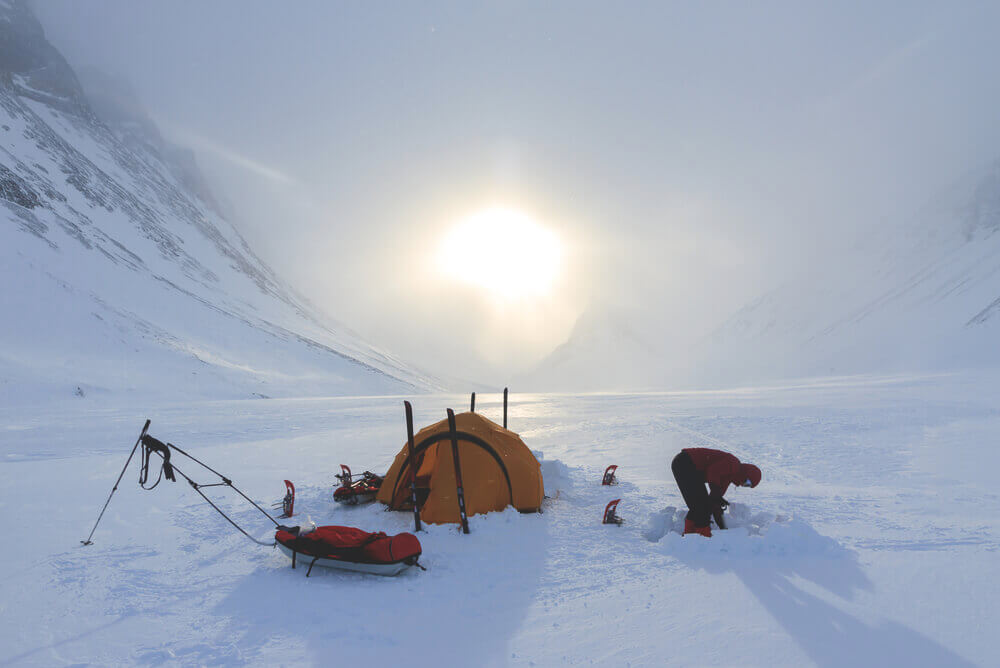
Now that you have your tent, where do you plan to pitch it? Well, you have to consider the weather. Research the weather systems in the area.
Make a note of any recent changes in the terrain as well as notable hazards that could impact your camping experience.
With the internet, this information isn’t that hard to collect. Make sure your tent can contend with the weather you will encounter. You should also keep an eye out for places that are sheltered from the elements, unusually direct winds.
Natural windbreaks like trees and shrubs should solve this problem. Though you should know that the direction of the wind can change quite suddenly, keep that in mind when selecting a camping ground.
One way to create a windbreak is to pull one side of your tarp down before staking it into the cold ground. This might give you more flexibility with regard to changes in the wind.
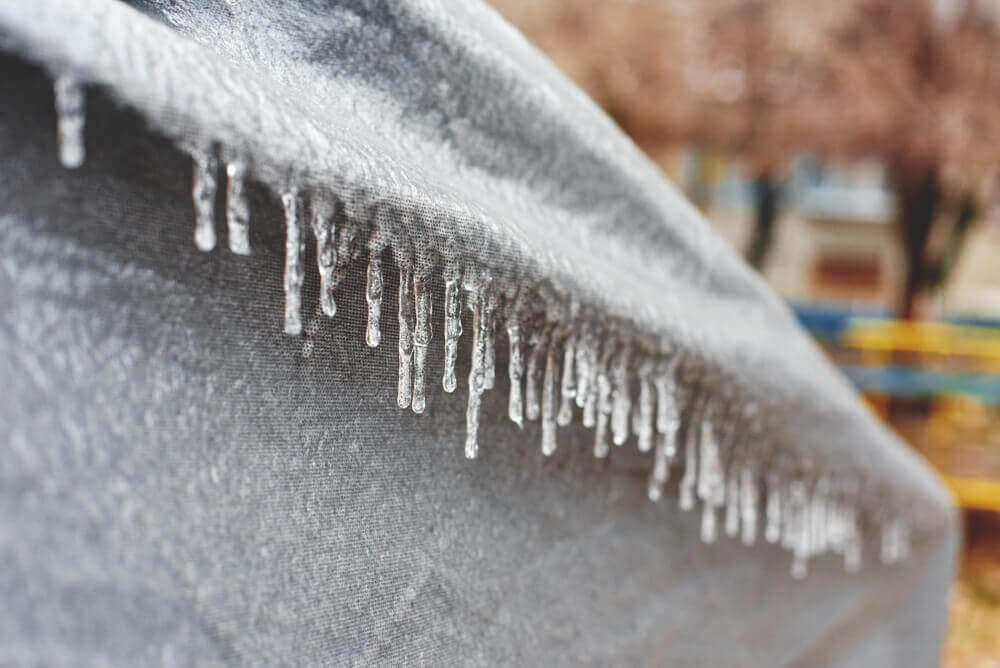
Avoid low areas where snow will likely settle. Don’t pitch your tent on a slope or in any location that might expose you to an avalanche.
Find some elevated ground. If the sun is a potential threat, the shadow of a rock formation could make all the difference in your insulation efforts.
You can’t go wrong with a flat, relatively dry surface. Hopefully, you brought tools. You will need them to clear away any unwanted snow. Keep working until you have exposed and then flattened the dirt. That is important, especially for the sleeping surface.
Keep it flat. Do this quickly before the ground grows hard and impossible to manipulate.
If you can create a nice shallow trough to prevent rolling, you will have an easier time keeping heat while you sleep. With thorough digging, you can create a simple snow wall that will debilitate the power of the wind.
External protectors, barriers for your insulated tent.
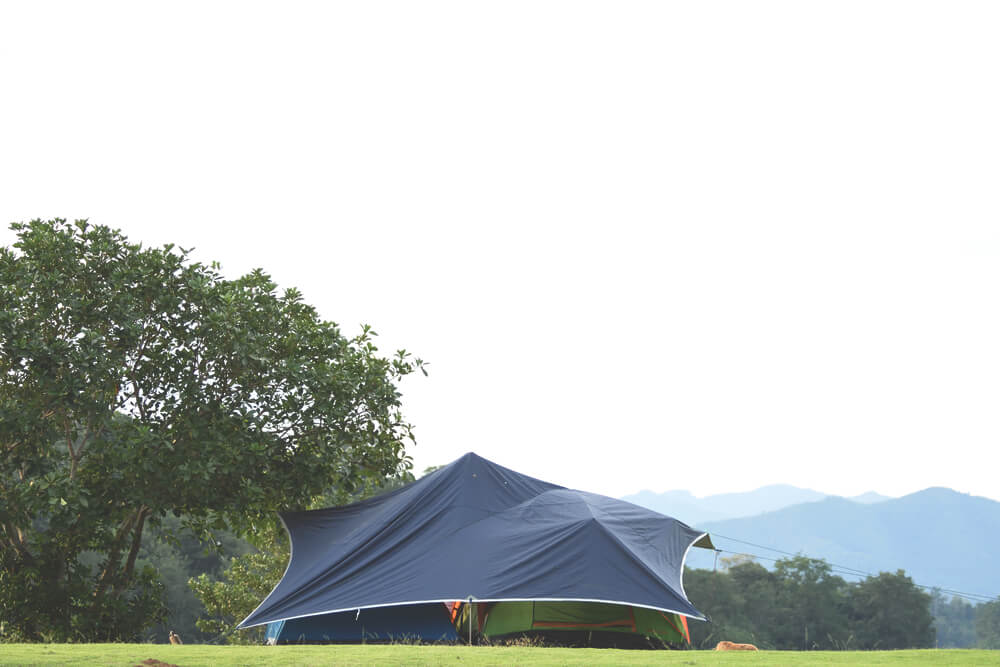
Before you can worry about keeping your body directly warm. You need to erect barriers on the outside that can keep the heat contained within the tent:
1. If you go camping in an open area, ground your tent securely with its provided tent stakes. Even if you found a sheltered camping ground, the weather can turn suddenly.
Even with the winds outside howling dangerously, you can sleep peacefully, knowing full well that your tent is staked correctly.
2. Create windbreaks to escape the icy winds that winter attracts. This is a simple matter of hanging a line between trees, placing a tarp on the line, and securing each side. If you don’t have trees, use stakes.
3. Add a substantial rain fly above your tent if you expect to encounter icy and damp conditions, waterproof the rain fly. In the absence of a rain fly, you can use a tarp, insulated tent cover or any other covering that can hover over the tent to keep snow, rain, dew, and the like away.
4. Heavy-duty reflective foam is an excellent material to keep on hand. It uses trapped gasses to provide insulation. You can use the material to insulate the floor.
The foam should have reflective surfaces on both sides to trap in warm air and repel cold air from the ground back down and heat from above back up.
You can also use it on the walls. Some people have been known to apply the foam to the ceiling of their tent.
Air bubble reflective foil also works. But the installation process is time-consuming, and you have to do it every single time you pitch your tent for winter camping.
On the other hand, no one can deny its effectiveness. The foil will reflect the heat that is trying to escape.
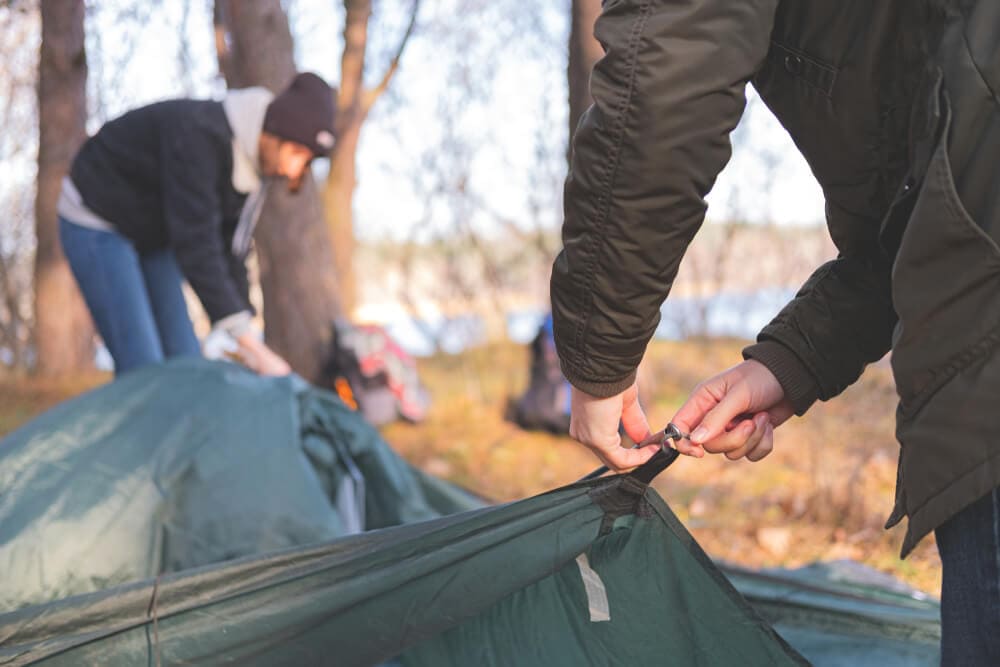
5. You can choose to place the reflective foil on the outside walls of the tent. If the reflective surface is facing outward, the foil will reflect the heat, keeping the tent fresh.
To generate heat, you must turn the reflective surface inward. But there is no way of determining how effectively the reflective surface will work when paired with the tent’s fabric.
6. Heating carpets are another effective means of keeping the cold out and the warmth in. You can use them in tandem with the reflective foil.
7. To create an insulated tent floor, financially constrained campers can make do with ordinary mats, rugs, blankets, and even thick towels. Lay them on the floor to prevent the cold from seeping into the thermal tent.
8. Make a fire pit and build a small fire. Make sure you have a source of heat nearby at all times.
Interested in How Hot Is a Campfire? Click Here to read our article and other camping tips on Campfire Heat.
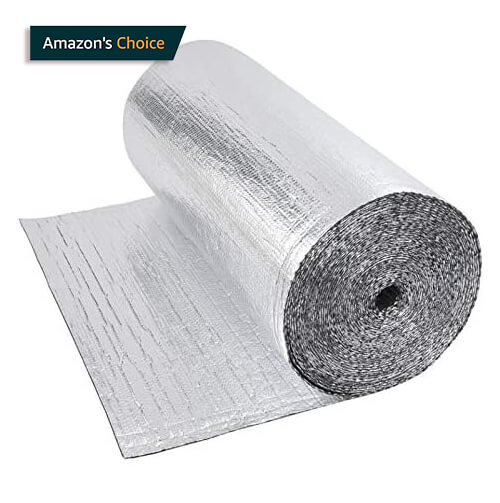
Internal camping gear to protect, retain heat.
Once the exterior has been sufficiently insulated, you can turn your attention to the interior:
- As was mentioned above, you are going to require blankets, not just for yourself but for the ground as well. This will prevent you from losing heat via conduction. Make sure you have spare blankets on hand.
- Once you enter the tent, you can ensure that your body heat stops escaping the cabin by placing a thermal blanket across the top. Use duct tape. The sheet will reflect your heat at you.
- Add a battery-powered tent heater to the tent for backup warm air. Buy one that is adequate for the size of your tent for winter camping. Naturally, you need to keep tent heater spare batteries on hand.
- Even with all the insulation, some cold air is bound to sneak in. The tent heater will banish it.
- Bring an air mattress. If you don’t have one, get a sleeping pad. Even with the blankets and the towels, you still require an additional barrier between your warm sleeping bag and the floor.
- While air mattresses make sleep comfortable, some of them are too bulky. If you can’t find a thin, portable air mattress, stick with a sleeping pad.
Personal winter camping equipment and gear to insulate yourself.

Once the interior has been satisfactorily insulated, you can start worrying about your body:
- If you are sharing your winter or summer tent with other people, bring your sleeping pads close together. Try to share as much of your body heat as possible.
- Place a non-insulated stainless steel water bottle in your sleeping bag. Over time, while you sleep, it will radiate heat, keeping you warm. Position it around your thighs, neck, and core.
- Wear thermal clothing. That includes socks and underwear. They will wick the moisture away, keeping you adequately dry and preventing frostbite. Thermal dress is also snug, padded, and soft.
- You should add as many clothing layers to your body as you can stand before you sleep.
- Protect your head and ears. The same goes for your hands. Wear gloves.
- Because the body loses most of its heat through the head, wear a hat or balaclava.
- Start layering at least an hour before you sleep. Give your body heat time to get warm.
- This goes without saying; you need a soft, thick sleeping bag that can keep you cocooned.
- If you can get your hands on heat packs, they will make your sleeping bag even warmer at night.
- Drink hot fluids like coffee before you sleep. Don’t forget to stock up on calories. Your body uses fats, sugars, and carbs as fuel to keep you warm.
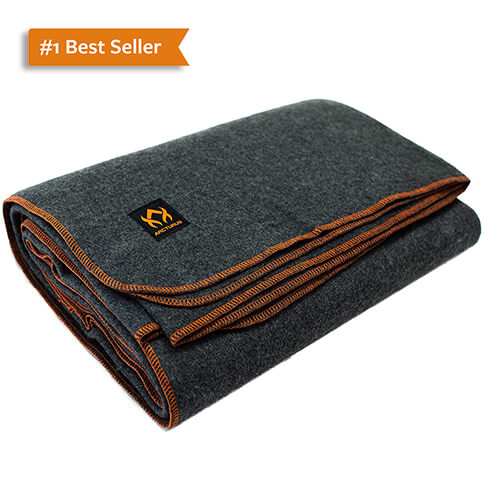
Quick winter camping tips for an effective insulated tent.
- Go out from time to time to keep the tent free of snow that might have accumulated
- Avoid alcohol. By increasing the flow of blood, it will also increase the rate at which your body loses heat.
- If the weather conditions are hazardous, tell someone where you are going to camp before you head out.
- Don’t keep any wet items inside the tent. They will steal your warmth
- If you are struggling to stay warm before bed, take a walk. Make sure you have enough layers on.

